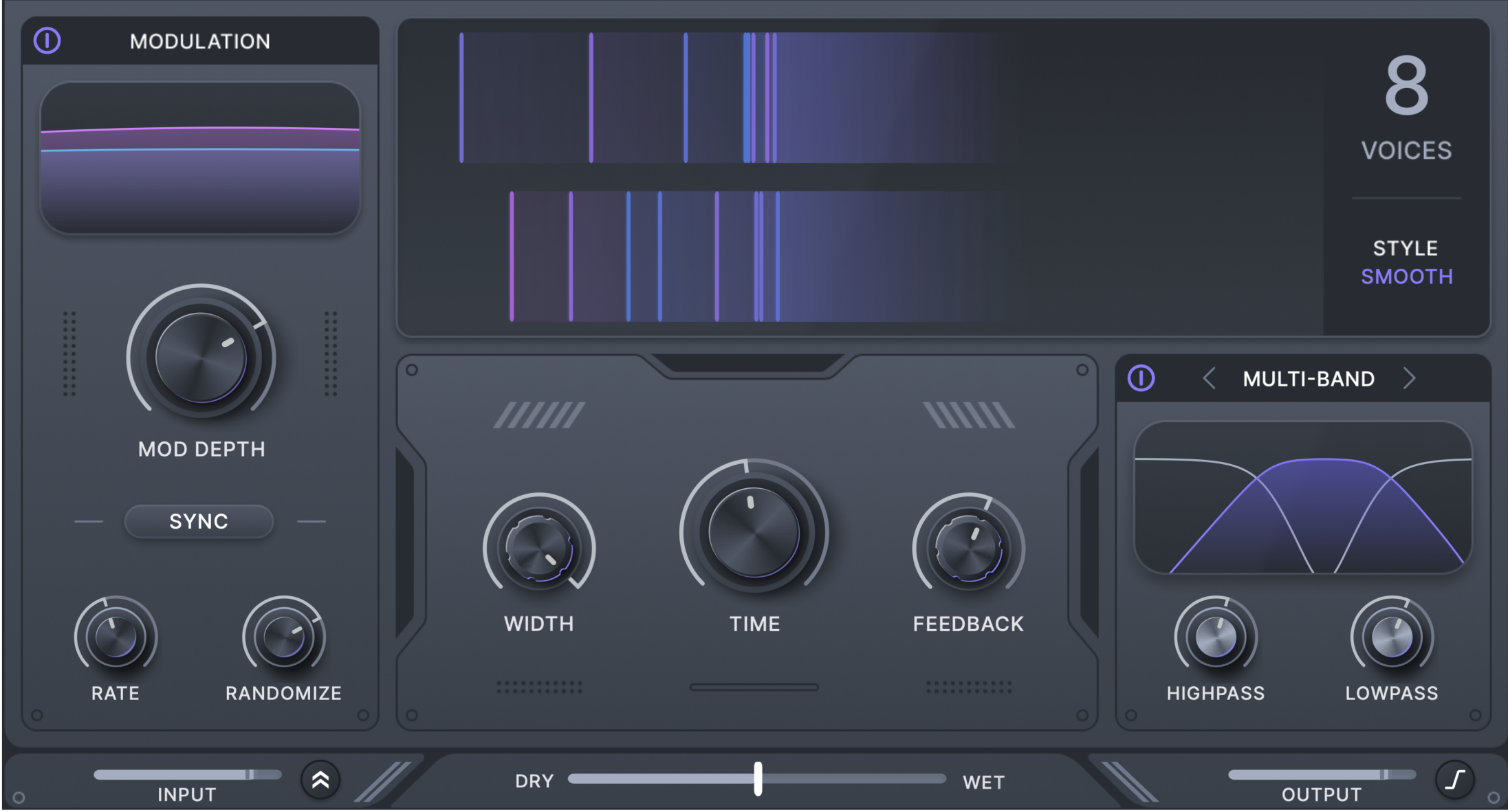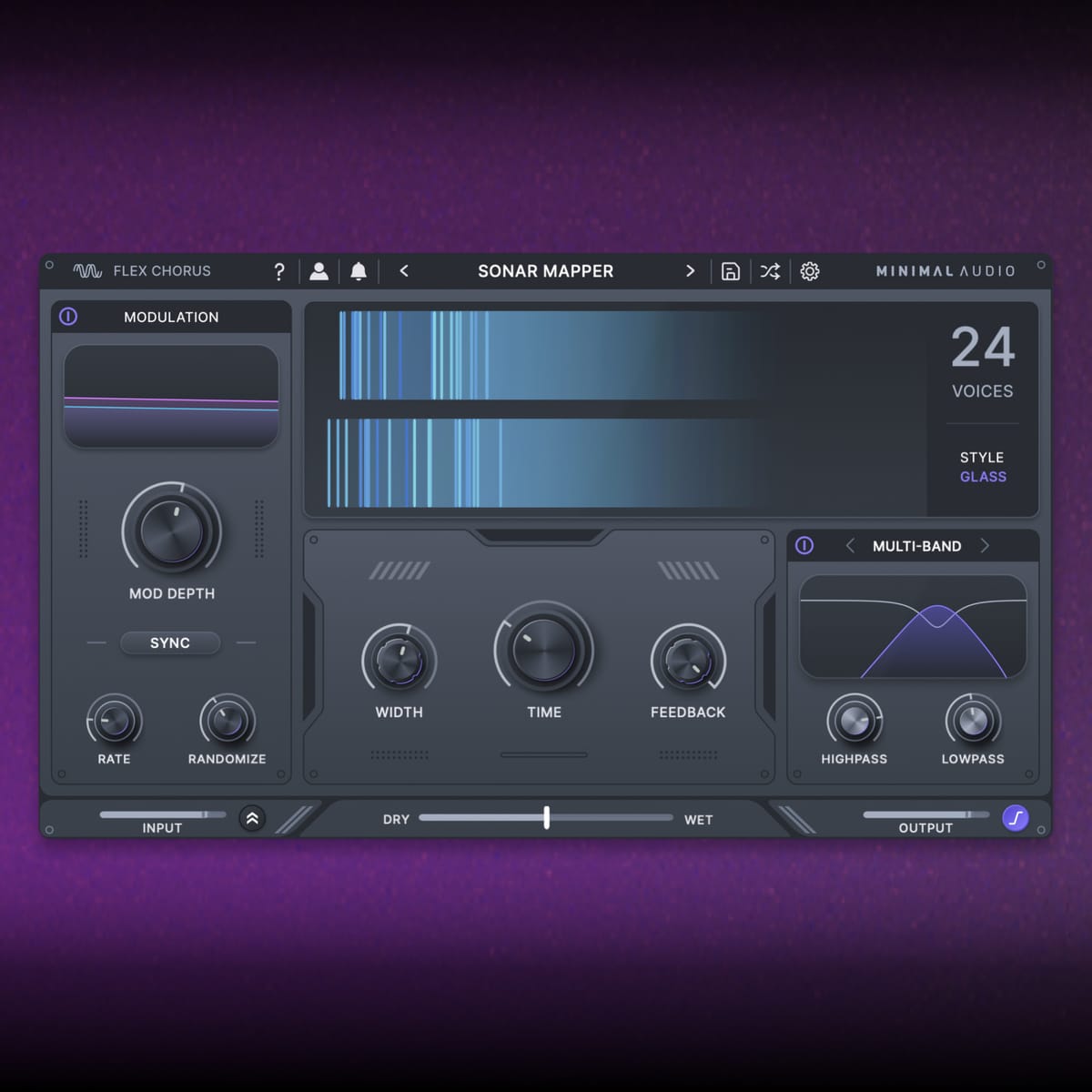Hey, what’s up everybody it’s Jake T. with Minimal Audio, and we are back with another blog! In case you missed it we just released our latest plugin Flex Chorus, and to celebrate I want to take a deep dive into one of my favorite effects!
Beginnings

Chorus is an indispensable piece in the sound designer's toolkit. It enriches sounds with lush, ethereal textures that can be used equally for making a sound wider as well as creating a complex sense of nostalgia in your music. The effect is the culmination of decades of technological advancement and creative experimentation that has continuously captured the imagination of listeners.
While prototypical versions of the effect have appeared on records dating back to the early 70s. It wasn't until the introduction of the Roland JC-120 in 1975 that the term “Chorus" began to pop up in recording studios. The amp was so popular that just one year later the CE-1 Chorus Ensemble appeared. A guitar pedal that used the same effects circuitry as the JC-120, reduced to a smaller footprint. Both of these tools were known for a shimmering spatial effect that quickly became a sought-after sound for both guitarists and studios.
Chorus Makes An Impact

In the 1980s the advent of digital signal processing (DSP) propelled chorus into the mainstream. These processors offered greater flexibility and control allowing musicians and producers to tailor the effect to their liking with precision. Because of its growing ubiquitousness in the studio chorus began to integrate itself into a variety of musical genres. Pop, rock, goth, new wave, and electronic music all featured the effect heavily at this time. Iconic recordings such as The Police’s “Every Breath You Take”, and Prince’s “Purple Rain” showcased the chorus’ ability to enhance sounds and entrance listeners.
The Shift

As the 20th century gave way to the 21st we saw the rise of the digital audio workstation (DAW). This is when the effect transitioned from large often unwieldy hardware units (looking at you Dimension-D) into software plugins. This shift helped democratize access to the effect, allowing young novice producers and musicians to experiment with chorus directly within their digital environment.
This shift is the point where we saw the effect fully penetrate the public consciousness. From video games to film, and television; the chorus effect became a staple for sound designers wanting to achieve immersive textures for the world they’re creating.
From its humble origins as an attempt to replicate the nuances of live performance to its status as a staple in sound design, chorus has left an indelible mark in the history of music. Its evolution mirrors the advancements in technology and the creative exploration of musicians and engineers throughout history. As these artists continue to push those boundaries of possibility, chorus remains a timeless tool for shaping and enriching our auditory experiences.

What's Next?
So you’re probably thinking…with such a rich, bountiful history; how does one advance the art of chorus? Luckily for us Minimal Audio’s cracked it.
Flex Chorus is the result of deep analysis into new and old chorusing techniques with countless hours spent fine tuning the controls and algorithms.
Each control in Flex Chorus has been carefully tuned to produce a wide range of results. Independent time and modulation controls allow you to create doubling and dimension expander effects, or push the effect into reverb-like territories. If you'd like to hear examples of what I'm talking about, check out Stranjah’s phenomenal Flex Chorus Walkthrough (embedded below).
Smooth & Glass

Two of Flex Chorus' features that I'd like to highlight specifically are its two algorithms, smooth and glass.
Smooth mode utilizes human frequency perception to achieve an exceptionally deep and rich sound. This algorithm emphasizes the delay modulation ranges around where we perceive the delay as a clean doubling effect as opposed to something like a comb filter or an echo.
Glass is your modern sounding algorithm. This mode features a clever multi-tap approach to chorus that can also be utilized to create resonator-like feedback.
As if that wasn’t enough Flex Chorus also boasts the most voices I’ve personally ever seen on a chorus plugin. Flex can create up to 24 voices of lush texture that add a stunning level of dimension and density to your sounds.
Additionally, the plugin hosts a capable multi-band filter that makes it easy to keep the effect exactly where you want it. Not only is it perfect for preserving sub bass, but it can also be used more creatively. For instance, it's great for expanding the body of snares and other percussion.
Flex also features two clipping modes, and an inspiring UI, and it’s easy to see why the response to our effect has been so strong!
As with every other effect from Minimal Audio, we find not just another plugin, but the results of the collective passion of a team willing to push the limits of sound.
Grab Flex Chorus now for $29 as a part of its special intro pricing. You can also try Flex for free as a part of our All Access 30-day free trial.


